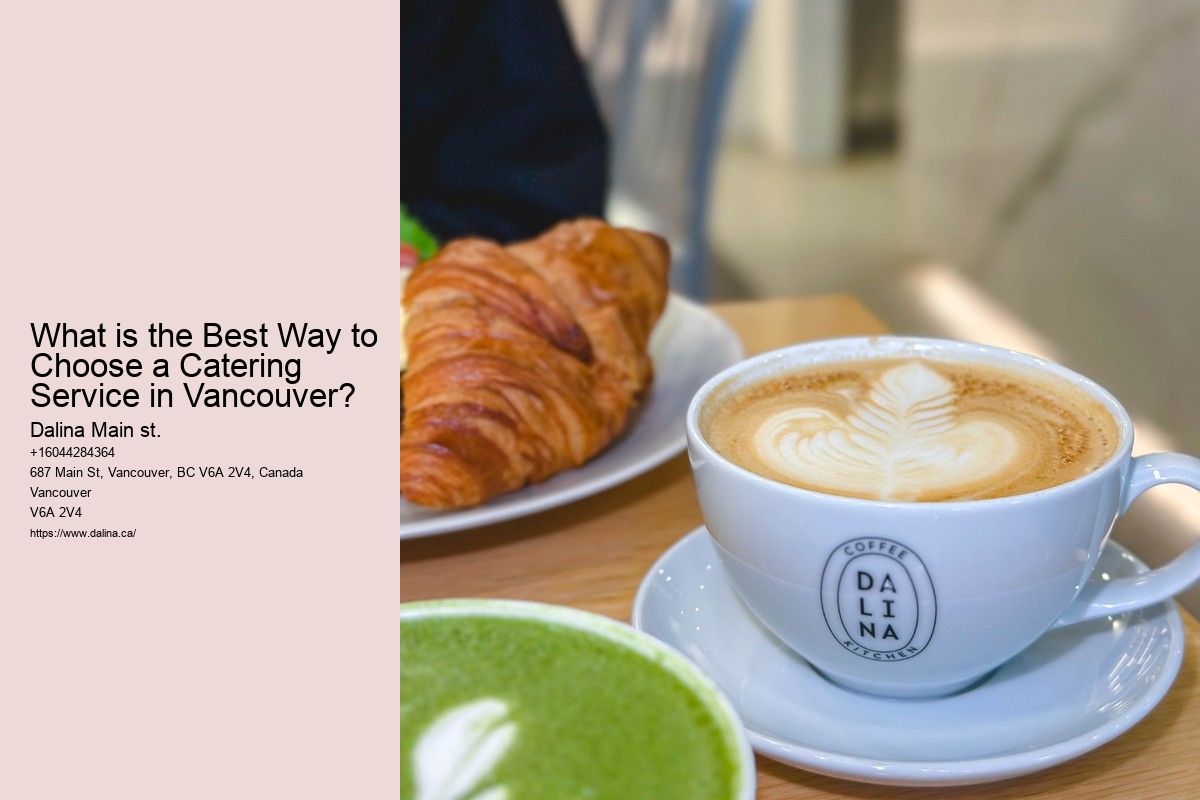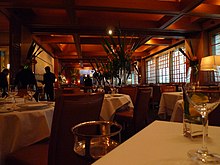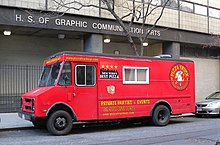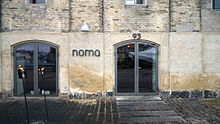Determine Your Catering Needs and Budget
When you're on the hunt for the perfect catering service in Vancouver, oh boy, it's a must to first pin down what you exactly need and how much dough you're willing to part with (and that's no small feat!) Before ya even think about tasting scrumptious hors d'oeuvres or eyeing elegant table setups, getting a grip on your event's specific needs is key.
First off, consider the type of event you're hosting. Learn more about Vancouver Catering Experts – Dalina Main St. here. Is it a laid-back barbecue or a swanky corporate gala? The nature of your event will not just influence the vibe but also dictate the kind of food you'll be serving. You wouldn't want a five-course meal at a beach picnic, right?
Then, there's the headcount. Knowing how many mouths to feed is essential. You don't wanna end up with too much food, wasting your hard-earned cash, or worse, not having enough to go around (talk about a party foul!)
Let's not forget dietary restrictions and preferences. Nowadays, you've got to account for vegetarians, vegans, gluten-free folks-the whole shebang. Ignoring this ain't an option unless you're cool with uncle Bob grumbling all night about his keto needs.
Now, the moolah part. Setting a budget isn't just about picking a number; it's about ensuring you get the most bang for your buck without skimping on quality. Seasonal Catering Menus You've got to be realistic; there's no point in dreaming of champagne on a beer budget. But that doesn't mean you can't have a fantastic spread!
After you've got all this figured out, the real fun begins-picking the caterer! But remember, the cheapest option might save you some change but could cost you in taste and service. And we all know a great meal can make or break an event!
So, take a deep breath, make a list (check it twice!), and start your search. With a clear idea of your needs and budget, you're well on your way to finding a catering service that'll have your guests raving (and your wallet thanking you). Good luck out there!
Research Local Catering Services in Vancouver
When it comes to picking the best catering service in Vancouver, it's like trying to find the perfect cherry on top of a sundae! It's not just about the food (though, let's be honest, that's a huge part!), but also about the service, the presentation, and how well they can accommodate your specific needs.
First off, research is key. Start by asking friends and family for recommendations – they're bound to have had experiences (good or bad) that they're itching to share. Vancouver Catering Reviews Also, don't shy away from online reviews; they can be a goldmine of information, but take them with a grain of salt because not all reviews are fair or accurate.
Once you've got a list of potential caterers, it's time to dig a bit deeper. Look at their menus. Do they offer a variety that suits your event's theme? Are they able to tailor their offerings to dietary restrictions or preferences? A good caterer should be flexible and willing to work with you.
Now, let's talk tasting sessions – they're a must! You wouldn't buy a car without giving it a test drive, would you? The same goes for catering. Any caterer worth their salt (pun intended!) should offer a tasting. This way, you can judge for yourself whether their food tickles your taste buds the right way.
And let's not forget about the budget. It's no use falling in love with a catering service only to find out they're way out of your price range. Be upfront about what you can afford and see if they can offer a package that fits. It's better to be clear about your budget constraints than to face a nasty surprise when the bill comes!
Communication is another crucial factor.
What is the Best Way to Choose a Catering Service in Vancouver? - Affordable Catering Solutions
- Cultural Cuisine Caterers
- Sandwich Catering Vancouver
- Luxury Catering Vancouver
- Wedding Catering Vancouver
- Personal Chef Services
- Event Catering Vancouver
- Catering Companies Vancouver
- Meal Prep Services Vancouver
- Vancouver Corporate Event Catering
- Local Caterers Vancouver
- Dinner Party Catering
- Buffet Catering Services
- Personalized Catering Services
- Casual Lunch Catering
- Catering Discounts Vancouver
Finally, consider the caterer's experience with events similar to yours. A caterer who's seasoned in handling big corporate events might not be the best for an intimate wedding, and vice versa. Context is everything!
In conclusion, choosing the best catering service in Vancouver isn't exactly a walk in the park. It requires a good deal of legwork and a bit of intuition too. But with a bit of patience (and a lot of tasting!), you'll find the perfect fit for your event. Just remember, it's about finding a balance between sublime flavors, stellar service, and, of course, a sensible budget!
Consider the Type of Event and Menu Preferences
Ah, the quest for the perfect catering service in Vancouver! It's a journey that can be as delightful as a well-prepared meal, or as tricky as a soufflé in a temperamental oven. When you're planning an event, whether it's a posh wedding or a casual corporate gathering, one thing's for sure – the food must be spot on!
Now, let's consider the type of event you're hosting. Is it a formal sit-down dinner or a laid-back beach barbecue?
What is the Best Way to Choose a Catering Service in Vancouver? - Vancouver Fine Dining Chef Services
- Dinner Buffet Catering Vancouver
- Beverage Services Vancouver
- Office Catering Vancouver
- Custom Catering Menus
- Celebration Catering Vancouver
- Vancouver Buffet Catering
- Small Event Catering
- High-End Catering Vancouver
- Sustainable Catering Solutions
- Vancouver Catering Recommendations
- Party Platters Vancouver
- Food Delivery For Events
- Conference Catering Vancouver
- Charcuterie Catering Boards
- Wedding Catering Services
- Food Platter Services
- On-Site Catering Vancouver
Moving onto menu preferences – these are a biggie! You've got to take into account the various tastes and dietary restrictions of your guests. Not everyone's a meat-lover, and gluten can be a foe to some. It's vital to find a caterer who can whip up a diverse menu that caters (no pun intended!) to all these needs without compromising on taste. A caterer who's willing to customize their menu offerings is worth their weight in gold – or, in this case, in appetizers and entrées!
Don't forget to do a taste test! I mean, would you buy a car without taking it for a spin? Birthday Party Catering Absolutely not! So, why settle on a caterer without sampling their culinary skills? This is where you can really gauge if their food makes your taste buds dance or if it's just a wallflower on the palate.
Now, let's talk budget, because let's face it, money doesn't grow on trees (more's the pity). You've got to find a balance between cost and quality – it's tempting to go for the cheapest option, but remember, you often get what you pay for! It's all about getting the best bang for your buck, but don't skimp on quality for the sake of a few dollars.
And here's a little tip: read reviews and ask for references!
What is the Best Way to Choose a Catering Service in Vancouver? - Craft Services Vancouver
- Vancouver Corporate Event Catering
- Local Caterers Vancouver
- Dinner Party Catering
- Buffet Catering Services
- Personalized Catering Services
- Casual Lunch Catering
- Catering Discounts Vancouver
- Vancouver Catering Menu Ideas
- Vancouver Chef-Prepared Catering
- Private Chef Vancouver
- Wedding Reception Catering
- Home Catering Services
- Outdoor Event Catering
- Gluten-Free Catering Vancouver
- Vancouver Garden Party Catering
- Gourmet Food Vancouver
So there you have it! Choose wisely, and your event will be the talk of the town (for all the right reasons!). And remember, the devil is in the details – or in this case, the deliciousness of the dishes! Happy planning!
Look at Reviews and Testimonials from Previous Clients
When it comes to picking the best catering service in Vancouver, one tactic that shouldn't be overlooked is the good ol' deep-dive into reviews and testimonials from previous clients! It's like getting a sneak peek into what you can expect, ain't it? These bite-sized insights can be super revealing about the quality of food, the level of service, and the overall reliability of the caterer you're considering.
Now, let's be real, not every review is going to be a five-star rave, and that's okay. Sometimes, you'll stumble upon a negative comment or two (it happens to the best of us), but that's where the gold is. You get to see how the catering service handles criticism – do they ignore it, or do they take the time to respond and make things right? That's a biggie in my book!
And, oh boy, if you're lucky, some clients go all out and leave detailed testimonials.
What is the Best Way to Choose a Catering Service in Vancouver? - Dessert Catering Vancouver
- Lunch Catering Vancouver
- Private Event Catering
- Catering For Non-Profit Events
- Food Truck Catering Vancouver
- Corporate Breakfast Catering
- Dinner Buffet Catering Vancouver
- Beverage Services Vancouver
- Office Catering Vancouver
- Custom Catering Menus
- Celebration Catering Vancouver
- Vancouver Buffet Catering
- Small Event Catering
- High-End Catering Vancouver
- Sustainable Catering Solutions
- Vancouver Catering Recommendations
- Party Platters Vancouver
- Food Delivery For Events
- Conference Catering Vancouver
But don't just stop at the first couple of reviews.
What is the Best Way to Choose a Catering Service in Vancouver? - Lunch Catering Vancouver
- Breakfast Catering Vancouver
- Vancouver Catering Packages
- Farm-To-Table Catering
- Tapas Catering Services
- Vancouver Plated Dinner Catering
- Fine Dining Catering
- Lunch Catering Services
- Healthy Catering Options
- Ethnic Food Catering
- Holiday Party Catering
- Caterer Vancouver Bc
- Vancouver Catering Services
- Cocktail Party Catering
- Casual Catering Services
- Private Event Catering Vancouver
So, to wrap it up, when you're on the hunt for a caterer in Vancouver, don't just take their word for how great they are. Themed Event Catering Trust, but verify – with the experiences of those who've walked before you. It's the best way to ensure you won't be left with a sour taste in your mouth (literally and figuratively).
In conclusion, take a gander at those reviews and testimonials! They're like the secret ingredients to making an informed decision. Craft Services Vancouver Happy catering hunting!
Check for Licensing, Insurance, and Health Standards Compliance
When yer on the hunt for the best catering service in Vancouver, mate, don't you go rushing into it without ticking some crucial boxes! First off, you've gotta check for licensing, insurance, and compliance with health standards, right? I mean, it's not just about the mouth-watering salmon or that perfect poutine (though, I won't lie, they're important too).
Now, let's dive in. Licensing – it's a no-brainer, eh? You can't have some random Joe throwing shrimp on the barbie without the proper papers. No way, Jose! The city of Vancouver takes this stuff pretty serious, and so should you. You'll want to ensure that the catering service has all the right licenses to operate – it's like a green light saying, "Yeah, we're legit!"
And hey, don't you forget about insurance. It's like an umbrella on a rainy Vancouver day; you hope you won't need it, but boy, are you glad when you've got it! Make sure the caterer has liability insurance. If something goes south (which we hope it doesn't!), you'll want them to be able to handle it without the drama falling back on you.
Now, for the health standards compliance - it's not just the icing on the cake, but it's the whole darn cake! If the caterer ain't meeting health codes, you could have a real mess on your hands (and I'm not talking about spilled gravy). Health inspections are there to keep everyone safe and sound, so a caterer with a clean bill of health is a must.
Oh, and here's a little tip: ask around! A caterer might look great on paper, but word of mouth is like gold. If they're not keeping up with standards, you'll hear about it faster than a seagull on a french fry.
In short, when choosing a catering service, don't just fall for the fancy menu or the slick website (though, I admit, they can be pretty convincing). Do your homework, make sure they're up to snuff with their licensing, insurance, and health standards compliance. It's the surefire way to avoid a catering catastrophe – and that's something to shout about!
Schedule a Tasting Session with Potential Caterers
Alright, so you're on the hunt for the perfect catering service in Vancouver, eh? Pop-Up Catering Vancouver Well, let me tell ya, it's not just a walk in the park! You've got to get yer ducks in a row and make sure you know what you're looking for. But hey, one of the best ways to narrow down your options is to schedule a tasting session with potential caterers. That's where the real fun begins!
First off, you'll wanna reach out to a handful of caterers that caught your eye. Don't just go by what you see online or what people are chattering about. Trust me, taste buds don't lie, and neither will yours after a good ol' tasting session! Catering Price Estimates Vancouver
So, you set up these appointments, right? But, oh boy, don't make the mistake of scheduling them all back-to-back. You'll end up with a jumbled palate and a confused mind (and possibly a bit of a tummy ache, let's be honest here). Space 'em out, take your time, and really savor the experience.
Now, when you're at these tastings, don't be shy. Ask questions! How do they source their ingredients? Can they accommodate dietary restrictions? (You know Aunt Marge is gonna throw a fit if she can't get her gluten-free options.) And of course, the biggie: How do they handle the unexpected? Because let's face it, on the big day, anything can happen!
But here's the kicker, the tasting session isn't just about the food (though, obviously, that's a huge part). It's also about gauging the service and the vibe you get from the caterer's team. Are they listening to you? Do they seem excited about your event? It's all in the details, my friend.
And remember, don't feel pressured to make a decision on the spot. It's not like you have to say "I do" to the first caterer that gives you a bite of a delectable canapé. Take your time, go home, and think it over.
In the end, it's not just about finding a caterer that serves up delicious food (though, let's not downplay how important that is – yum!). It's about finding a team that you trust to handle your event with care and professionalism. Someone who'll make your day as stress-free as possible!
So, go on, schedule those tastings! Special Event Catering Get out there, and find the caterer that makes your heart (and your stomach) sing with joy! And when you do find 'em, it'll be like magic, I tell ya!
Assess the Level of Service and Flexibility Offered
When you're in the market for a catering service in Vancouver, it's not only the menu that should be on your radar. Oh no! You've gotta take a good, hard look at the level of service and flexibility the caterer offers. Let's be real, planning an event is as stressful as a squirrel during nut shortage! So, finding a catering company that can roll with the punches is key.
First off, you'll want to assess how responsive they are. Do they get back to you faster than a Vancouverite running in the rain? Or is it like waiting for a sunny day in November - practically forever? If they're not quick to respond early on, who's to say they'll be on the ball when it really counts? And trust me, on event day, every second counts.
Next up, flexibility. Dessert Catering Vancouver Now, we ain't talking yoga moves here, but rather, can they handle those last-minute changes that are bound to happen? Maybe Aunt Marge suddenly decides she's gluten-free or your boss decides to invite an extra 50 people. Summer Party Catering A top-notch caterer should be able to accommodate these changes without breaking a sweat (or at least not letting you see them sweat).
What is the Best Way to Choose a Catering Service in Vancouver? Party Catering Vancouver Vancouver Fine Dining Chef Services - Vancouver Catering Reviews
- Finger Food Catering Vancouver
- Special Event Catering
- Birthday Party Catering
- Kid-Friendly Catering
- Corporate Catering Vancouver
- Affordable Catering Vancouver
- Affordable Catering Solutions
- Wedding Buffet Catering
- Dessert Catering Vancouver
- Vancouver Catering Reviews
- Catering Price Estimates Vancouver
- Vancouver Fine Dining Chef Services
- Seasonal Catering Menus
- Party Catering Vancouver
- Summer Party Catering
- Themed Event Catering
- Craft Services Vancouver
And let's not forget about the personal touch (because nobody likes feeling like just another invoice number). Do they listen to your needs and tailor their services to fit your event like a glove? Or do you get the impression they're just churning out cookie-cutter events? Remember, it's your shindig, so you call the shots!
In conclusion, while you're hunting for the perfect caterer, remember to assess their level of service and flexibility. It's not enough to have a scrumptious spread if the service is stiffer than a starched shirt. You want someone who's gonna bend over backwards (figuratively, of course) to make your event a smashing success! So ask those questions, feel 'em out and choose a caterer that's as adaptable as Vancouver's weather – because, let's face it, that's pretty darn adaptable!
Compare Quotes and Finalize Your Choice
When it comes to selecting the best catering service in Vancouver, it's a bit of a pickle, isn't it? You've got a whole spread of options, each with their own flavour of service and culinary expertise. Now, the real meat and potatoes of the decision-making process lies in the ability to compare quotes and finalize your choice with a keen eye (and perhaps, an even keener palate).
First off, let's dive into the comparing part. You don't want to just grab the first quote that comes your way and call it a day. No sirree, that won't do! You've got to line 'em up side-by-side. Look at what each caterer's offering: the menu options, the quality of ingredients (because who wants a soggy salad or a lacklustre lasagna?), the level of service, and, of course, the price tag.
What is the Best Way to Choose a Catering Service in Vancouver? - Summer Party Catering
- Gourmet Catering Vancouver
- Corporate Lunch Delivery
- Office Catering Services
- Wedding Buffet Catering
- Dessert Catering Vancouver
- Vancouver Catering Reviews
- Catering Price Estimates Vancouver
- Vancouver Fine Dining Chef Services
- Seasonal Catering Menus
- Party Catering Vancouver
- Summer Party Catering
- Themed Event Catering
- Craft Services Vancouver
- Vancouver Seafood Catering
- Pop-Up Catering Vancouver
Now, I bet you're wondering, "How do I know if I'm getting a good deal?" Well, that's where your detective hat comes in handy. Check out reviews, ask for sample menus, and maybe even taste-test if you've got the chance (and who'd say no to that?). Corporate Catering Vancouver Got dietary restrictions or specific requests? Make sure they're willing to accommodate. It's all about the details!
Once you've mulled over the options (and maybe mulled some wine while you're at it), it's decision time. But don't rush it! Sit down with your notes, compare the pros and cons, and have a heart-to-heart with your budget. Remember, you're not just buying food; you're crafting an experience for your guests.
And here's where the negation comes into play: don't think that the most expensive quote is automatically the best. Sometimes, the little guy with the lower price can pack a punch with their culinary creativity and personal touch. It's not always about the flashy bells and whistles; sometimes, the subtle details make the biggest impact.
So, when you've finally got that gut feeling (and after ensuring that it's not just hunger), go ahead and finalize your choice. Pick up the phone, send that email, or meet in person and say, "You're the one!" with the same confidence that you'd have picking the last piece of cake at a buffet. And just like that, you're all set! You've compared, you've chosen, and now, you can sit back and wait for the feast to begin. Oh, what a spread it'll be!

























